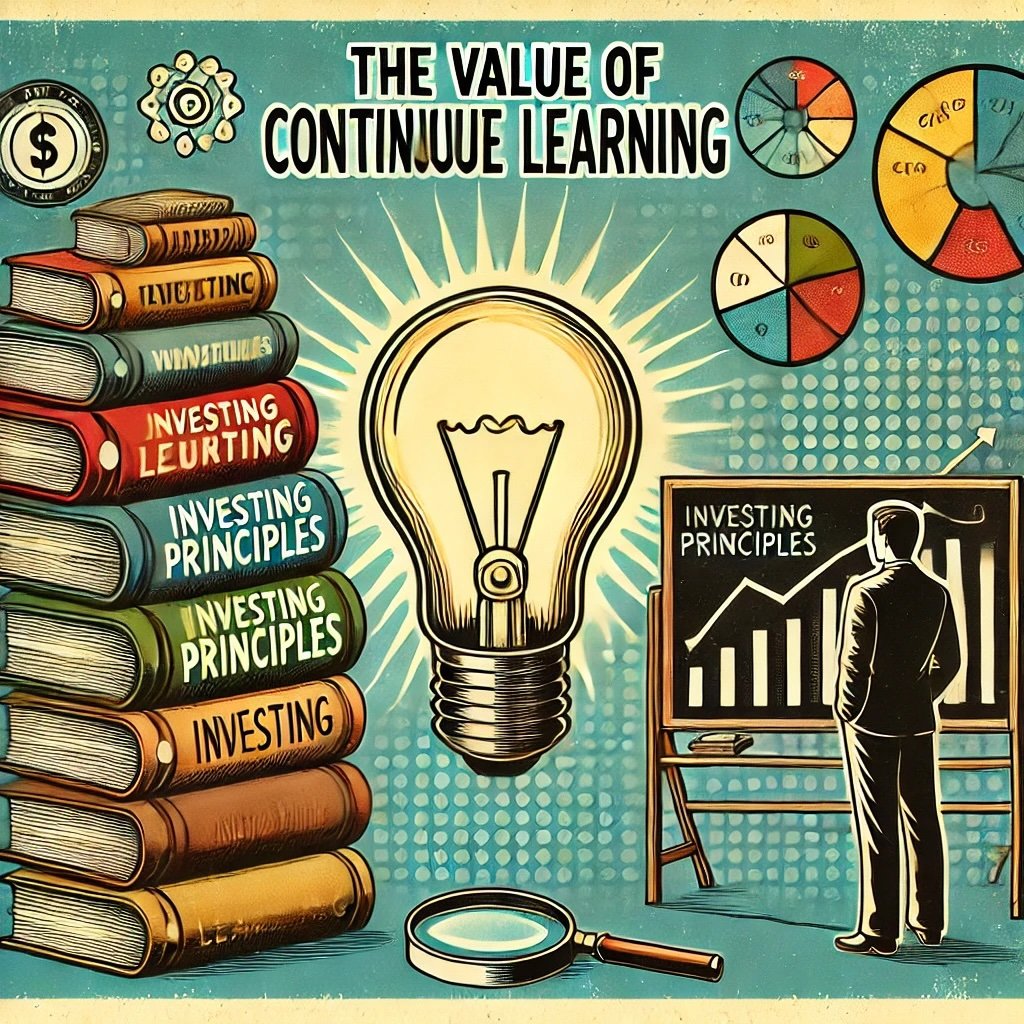Canada’s housing market has been on a rollercoaster ride in recent years. Skyrocketing prices, especially in major cities like Toronto and Vancouver, have made homeownership feel out of reach for many. The situation has left experts, homeowners, and potential buyers alike questioning whether this surge in prices is sustainable or if it’s signaling something more ominous—a housing bubble.
source: Global News on YouTube
Overview of Canada’s Housing Market
We’ll dig deep into Canada’s housing affordability crisis. We’ll explore whether the steep climb in home prices is a natural result of supply and demand dynamics or if it’s an alarming sign of an extreme bubble waiting to burst. By examining key indicators, this article aims to provide clarity on the situation, helping readers make informed decisions in a market that’s increasingly unpredictable.

Signs Of A Housing Bubble
Understanding the potential signs of a housing bubble isn’t just for economists or real estate professionals—it’s crucial for everyone involved in the housing market. For homeowners, it could mean the difference between building equity or facing a downturn. For investors, it’s about managing risk in a potentially volatile market. And for policymakers, it’s about crafting strategies to ensure the market remains stable and accessible. Whether you’re buying your first home, investing in real estate, or simply trying to make sense of the market, this article will equip you with the knowledge to navigate Canada’s housing landscape.
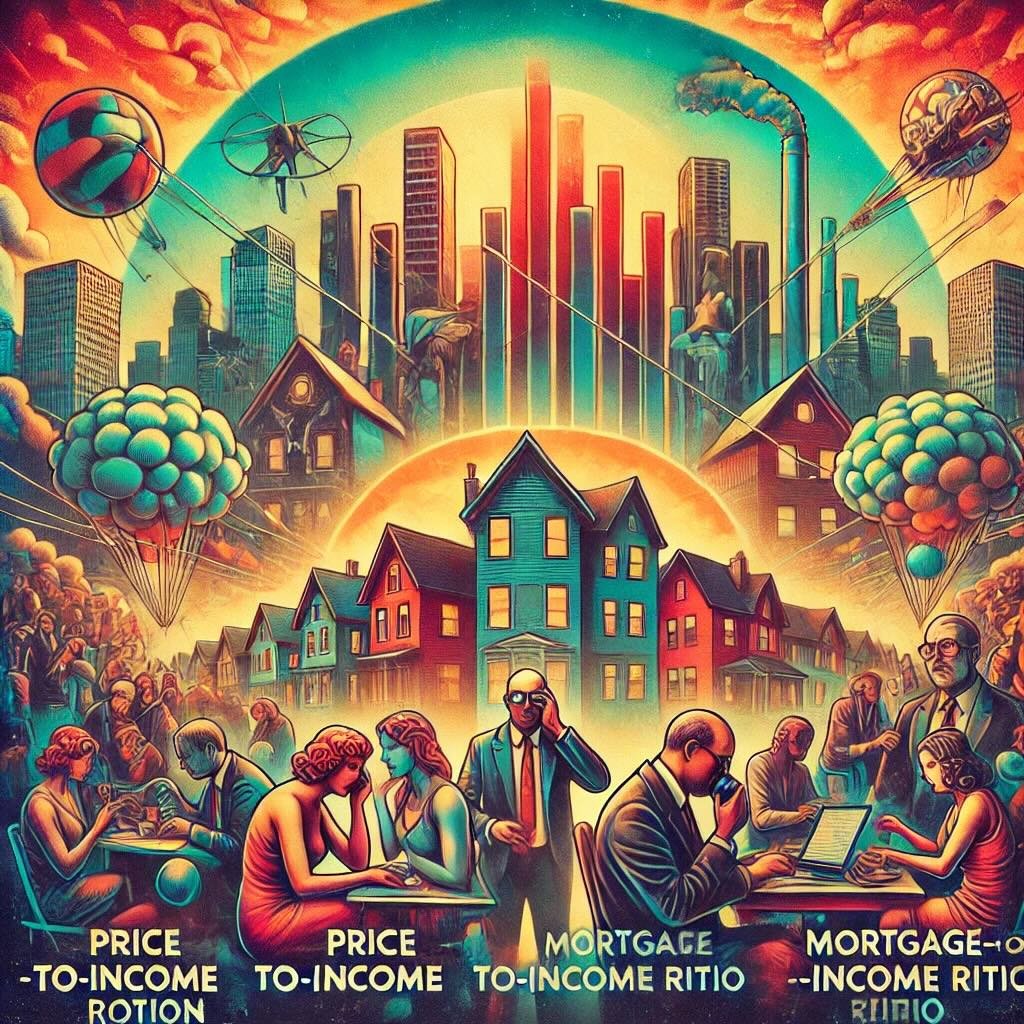
Understanding Housing Affordability
Definition of Housing Affordability
Housing affordability is more than just a buzzword—it’s a measure of how accessible homeownership or renting is for the average person. At its core, housing affordability is typically gauged by comparing the cost of housing to a household’s income. Two common metrics are the price-to-income ratio and the mortgage-to-income ratio.
- Price-to-Income Ratio: This compares the median home price to the median household income. A higher ratio suggests that housing is less affordable.
- Mortgage-to-Income Ratio: This looks at the percentage of a household’s income that goes toward mortgage payments. When this percentage creeps too high, it’s a red flag that housing costs are becoming burdensome.
These metrics offer a snapshot of how financially accessible housing is, helping us understand whether the current market conditions are within a reasonable range or drifting into dangerous territory.
Current Affordability Metrics in Canada
When we dive into the numbers, the picture isn’t pretty. Cities like Toronto, Vancouver, and Montreal are leading the charge in making headlines for their jaw-dropping home prices. In Toronto, the price-to-income ratio has soared to levels that many experts deem unsustainable. Vancouver isn’t far behind, with some of the highest housing costs in North America. Montreal, traditionally seen as more affordable, is also seeing significant price hikes that are pushing the limits of what the average family can afford.
To put it into perspective, recent data shows that the average price-to-income ratio in Toronto is hovering around 9 to 10 times the median income. This is far above the range considered affordable, which is generally 3 to 4 times the median income. Vancouver’s numbers are even more staggering, with ratios climbing into double digits. These metrics paint a clear picture: for many, especially in these urban hubs, homeownership is slipping further out of reach.
Impact on Different Demographics
The affordability crisis isn’t hitting everyone equally. First-time homebuyers are feeling the squeeze the most, often finding themselves priced out of the market before they even have a chance to enter. Young families, too, are struggling as they balance the need for more space with the skyrocketing costs of homes in neighborhoods with good schools and amenities. For low-income households, the situation is even more dire. Many are being pushed to the fringes of the market, forced to rent rather than own, or to settle for housing far from employment centers and support networks.
These groups are not just facing financial strain; they’re also dealing with the emotional and social impacts of housing insecurity. The dream of homeownership is becoming more elusive, with each year pushing it further out of reach for those who aren’t already established in the market. This growing divide in housing accessibility is not just an economic issue—it’s a societal one, with long-term implications for community stability and overall quality of life.
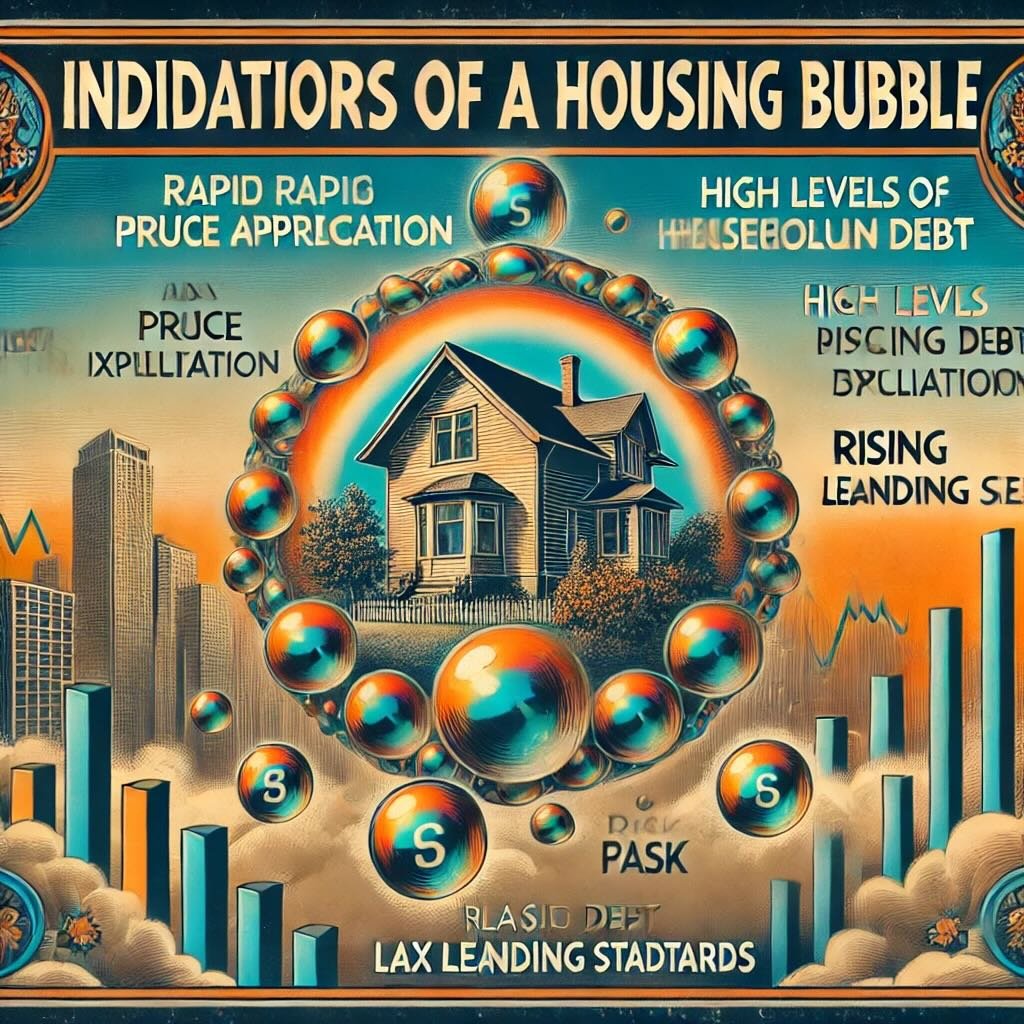
Indicators of a Housing Bubble
Rapid Price Appreciation
Over the past decade, Canada’s housing market has witnessed a meteoric rise in home prices, particularly in its major urban centers. Cities like Toronto and Vancouver have seen home values double—or even triple—in just a few short years. This rapid appreciation has left many wondering if these prices are sustainable or if they’re setting the stage for a dramatic correction.
To get a clearer picture, it’s helpful to compare this recent surge with historical data. Historically, housing markets that have experienced such steep and rapid price increases have often been followed by significant downturns. For example, the U.S. housing bubble of the mid-2000s saw similar patterns of rapid price growth before the infamous crash of 2008. When comparing Canada’s current trajectory with these past bubbles, the similarities are hard to ignore, raising concerns that a similar fate could be on the horizon.
High Levels of Speculation
Another key indicator of a potential housing bubble is the level of speculative activity in the market. In Canada’s hottest markets, speculative buying has become increasingly common, with investors purchasing properties not for long-term living but for quick resale at a higher price. This speculative behavior has been particularly evident in cities like Toronto, where investor-owned properties and house flipping have become widespread.
The prevalence of this speculative activity is concerning because it drives prices up even further, creating a cycle of rising costs that is disconnected from the underlying economic fundamentals. When too many properties are bought with the sole intention of flipping for profit, it inflates the market artificially. This kind of speculation has been a hallmark of previous housing bubbles worldwide, and its presence in Canada is a red flag that the market could be overheated.
Rising Household Debt
As home prices have surged, so too has the level of household debt in Canada. Many Canadians have taken on significant debt to afford homes in this high-priced market, leading to record levels of indebtedness. According to recent data, Canada’s household debt-to-income ratio has climbed to alarming heights, surpassing even that of the U.S. at the peak of its housing bubble.
The risks associated with high household debt are compounded in a rising interest rate environment. As rates increase, the cost of servicing that debt goes up, squeezing household budgets and potentially leading to a wave of defaults if borrowers can no longer keep up with their payments. This scenario is particularly concerning given the current economic conditions, where interest rates are expected to rise in the coming years. High debt levels in this context could be the tipping point that turns a hot market into a bursting bubble.
Lax Lending Standards
One of the hallmarks of a housing bubble is the loosening of lending standards, making it easier for borrowers to take on more debt than they can realistically afford. In Canada, there’s been debate over whether lending standards have become too lax in recent years. While regulators have introduced some measures to tighten the market, such as mortgage stress tests, there’s still concern that the system is allowing borrowers to stretch their finances too thin.
When comparing Canada’s current lending practices with those seen in past bubbles, there are both similarities and differences. In the lead-up to the U.S. housing crash, for instance, lending standards became so loose that nearly anyone could qualify for a mortgage, regardless of their ability to repay. While Canada hasn’t reached that extreme, the rising levels of household debt and the growing number of highly leveraged borrowers suggest that there may be some parallels. The question remains: are today’s lending standards sufficient to prevent a similar collapse, or are we on a path toward repeating history?
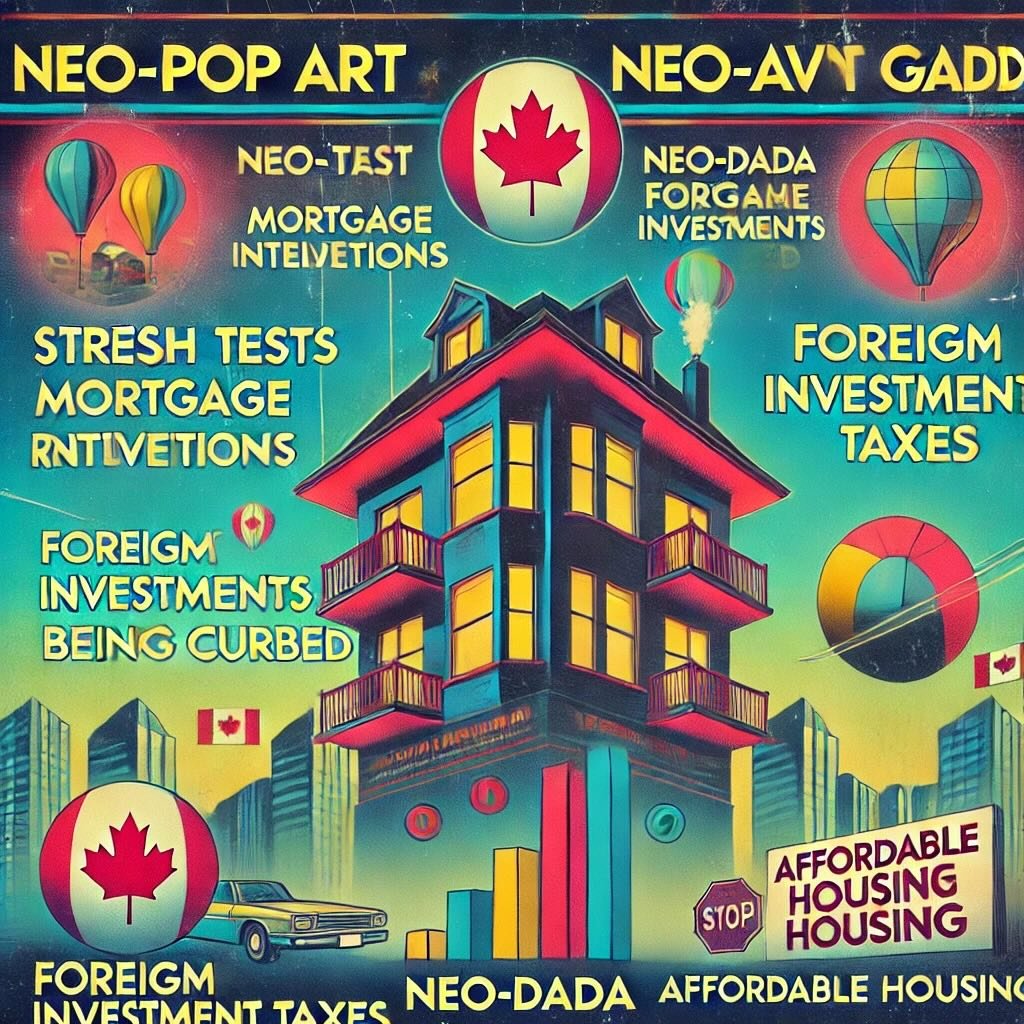
Government Policies and Market Interventions
Stress Tests and Mortgage Regulations
In an effort to cool Canada’s red-hot housing market, the government has implemented a series of mortgage stress tests and regulations. These measures were introduced to ensure that borrowers could afford their mortgages even if interest rates were to rise, thereby reducing the risk of defaults. The stress tests require potential homebuyers to qualify for a mortgage at a higher interest rate than what they would actually pay, creating a buffer against financial strain.
But how effective have these regulations been? On one hand, they’ve succeeded in tempering some of the more speculative buying behaviors by making it harder for over-leveraged individuals to enter the market. On the other hand, critics argue that these measures have also made it more difficult for first-time buyers to get on the property ladder, particularly in markets where prices are already sky-high. While the intention behind these stress tests is to foster a more stable housing market, their impact has been double-edged, curbing some risks while also potentially sidelining legitimate buyers.
Foreign Investment and Speculation Taxes
In recent years, Canada has also introduced policies targeting foreign buyers and speculative investors, who have been blamed for driving up housing prices, particularly in major urban centers. Measures like the foreign buyer tax and vacancy taxes were designed to cool speculative investment by making it more expensive to purchase and hold properties without occupying them. The foreign buyer tax, for instance, adds a surcharge to the purchase price for non-resident buyers in certain provinces, while the vacancy tax penalizes property owners who leave their homes unoccupied for extended periods.
The effectiveness of these policies has been a topic of debate. Some data suggests that these taxes have helped to slow down the rapid price increases in markets like Vancouver and Toronto by discouraging speculative investments. However, others argue that these measures have had a limited impact, with wealthy foreign investors simply absorbing the extra costs without altering their buying habits. Furthermore, these policies may have unintended consequences, such as reducing the overall supply of rental properties if owners choose to sell rather than pay the vacancy tax.
Affordable Housing Initiatives
To address the growing affordability crisis, the Canadian government has also rolled out various initiatives aimed at increasing the supply of affordable housing. These efforts include funding for new affordable housing projects, incentives for developers to build more low-cost units, and programs to help first-time buyers enter the market. The goal is to increase the availability of affordable homes, thereby easing some of the pressure on the housing market and making homeownership more accessible to a broader range of Canadians.
However, the challenges in achieving these goals are significant. The demand for affordable housing far outstrips supply, particularly in major cities where land and construction costs are high. Moreover, these initiatives often face delays and bureaucratic hurdles that slow down the pace of development. While the government’s efforts to increase affordable housing are a step in the right direction, the scale of the crisis means that much more needs to be done to meet the growing demand.
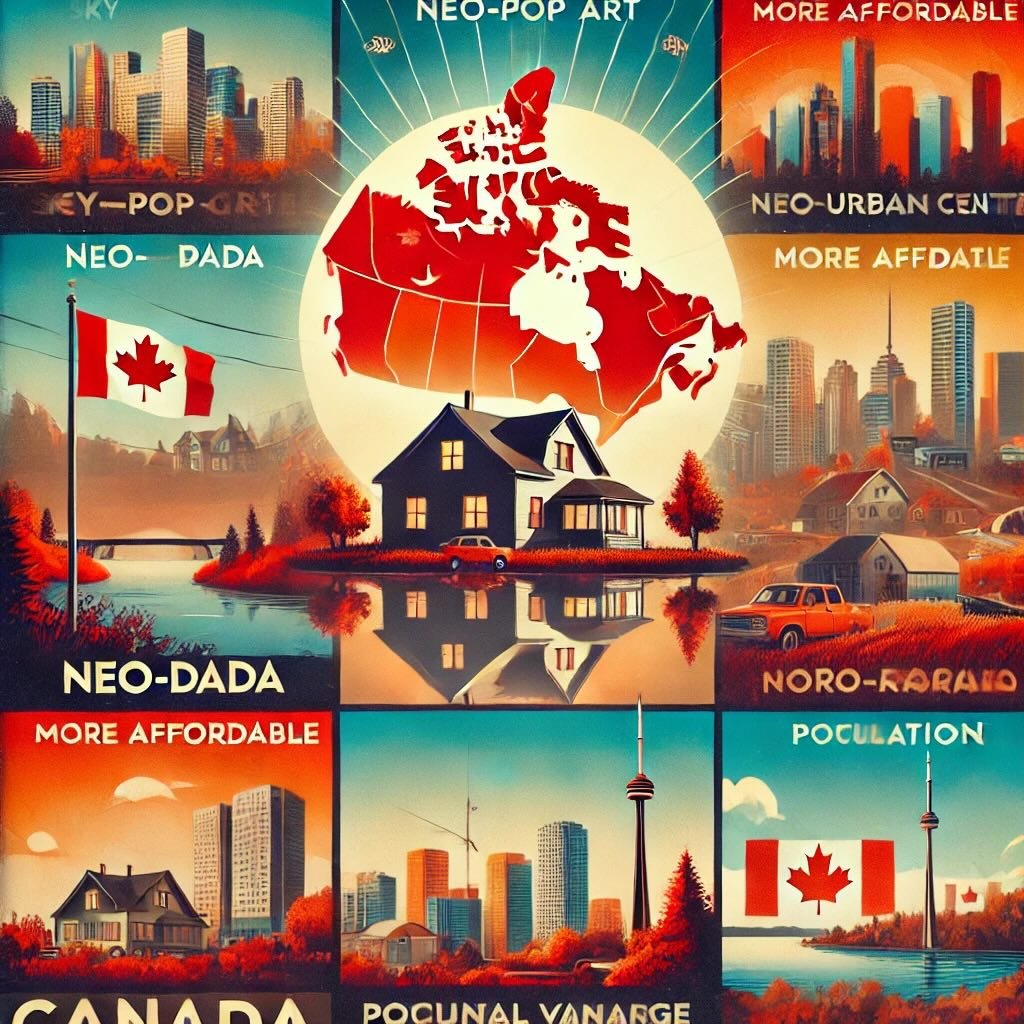
Regional Differences in the Housing Market
Major Urban Centers vs. Rural Areas
When it comes to housing affordability, the divide between Canada’s major urban centers and its rural areas couldn’t be starker. Cities like Toronto and Vancouver have become synonymous with sky-high property prices and bidding wars, leaving many potential homeowners feeling priced out. These urban markets are driven by a potent mix of limited supply, high demand, and intense competition among buyers. The result? A persistent affordability crisis that shows no signs of abating.
On the other hand, rural areas and smaller markets tell a different story. In many of these regions, home prices have remained relatively stable, or at least more accessible compared to their urban counterparts. But that doesn’t mean rural areas are without their challenges. While housing may be more affordable, these regions often struggle with issues like lower employment opportunities, less infrastructure, and a dwindling population, which can limit the appeal of rural living despite the more reasonable home prices.
Provincial Variations
Housing market conditions vary widely across Canada’s provinces, each influenced by a unique set of economic, political, and social factors. In British Columbia and Ontario, particularly in cities like Vancouver and Toronto, the housing crisis is at its most severe, with prices soaring well beyond the reach of many middle-class families. These provinces have seen some of the most aggressive policy responses, including foreign buyer taxes and increased regulation, in an attempt to cool the market.
Contrast this with provinces like Alberta or Saskatchewan, where the housing market is less heated, yet still facing challenges. In these regions, the issue may be less about affordability and more about market stagnation, driven by economic factors like the oil industry’s ups and downs or slower population growth. Meanwhile, provinces like Quebec have their own dynamics, with Montreal experiencing a recent surge in prices but still offering more affordability compared to Toronto or Vancouver. This patchwork of provincial experiences highlights the complexity of Canada’s housing market, where no one-size-fits-all solution exists.
Impact of Migration and Population Growth
Internal migration and population growth are also key drivers of regional differences in Canada’s housing market. As people flock to urban centers in search of better job opportunities and amenities, these cities face increasing pressure on their housing supply, pushing prices ever higher. The influx of new residents often outpaces the development of new housing, exacerbating the affordability crisis.
However, this trend is also creating ripple effects in smaller cities and rural areas. As some urban dwellers seek refuge from the high cost of living in big cities, they’re moving to more affordable regions, driving up demand—and prices—in places that were once more affordable. This migration pattern is reshaping regional housing markets, with some smaller cities experiencing rapid growth and rising costs, while others continue to face economic challenges and depopulation. The interplay between migration, population growth, and housing affordability is complex, with each region of Canada experiencing its own set of challenges and opportunities.

Potential Consequences of a Housing Bubble Burst
Economic Impact
If Canada’s housing market were to experience a significant correction or burst, the ripple effects could be felt across the entire economy. Housing plays a crucial role in the country’s economic health, contributing to GDP through construction, real estate services, and consumer spending related to homeownership. A sharp decline in home prices could lead to a slowdown in these sectors, reducing overall economic growth. Employment could also take a hit, particularly in industries closely tied to housing, such as construction, real estate, and mortgage lending. The broader economic uncertainty that accompanies a housing downturn could further dampen consumer spending, leading to a vicious cycle of reduced demand and slower growth.
Impact on Homeowners
Homeowners who purchased properties at peak prices would be among the hardest hit in the event of a housing bubble burst. These individuals could find themselves in a situation of negative equity, where their homes are worth less than the mortgages they owe. Negative equity can trap homeowners in their current properties, unable to sell without incurring a financial loss. For those who lose their jobs or face other financial hardships, the risk of foreclosure increases, potentially leading to a surge in distressed sales and further downward pressure on home prices. The psychological toll on homeowners should not be underestimated, as the loss of home equity can affect overall financial security and long-term planning.
Banking and Financial Sector Risks
Canada’s banking and financial sector could also face significant risks if the housing market were to collapse. Banks and other financial institutions are heavily exposed to the housing market through mortgage lending. A sharp decline in home prices could lead to a rise in loan defaults and delinquencies, threatening the stability of these institutions. The interconnectedness of the financial system means that troubles in one area can quickly spread, leading to broader financial instability. While Canada’s banking system is considered robust and well-regulated, the sheer size of the housing market relative to the economy means that any severe downturn could have far-reaching consequences.
Social and Community Impacts
The social and community impacts of a housing bubble burst could be severe. As home values decline, the wealth of many Canadian families would be significantly reduced, leading to a decrease in spending and an increase in financial insecurity. In extreme cases, this could lead to higher rates of homelessness, as individuals and families unable to keep up with mortgage payments lose their homes. Communities could also be disrupted by an increase in foreclosures and the subsequent turnover of homes, leading to neighborhood instability and a decline in community cohesion. Additionally, the stress and anxiety associated with financial loss and housing insecurity could have broader implications for mental health and well-being across affected populations.
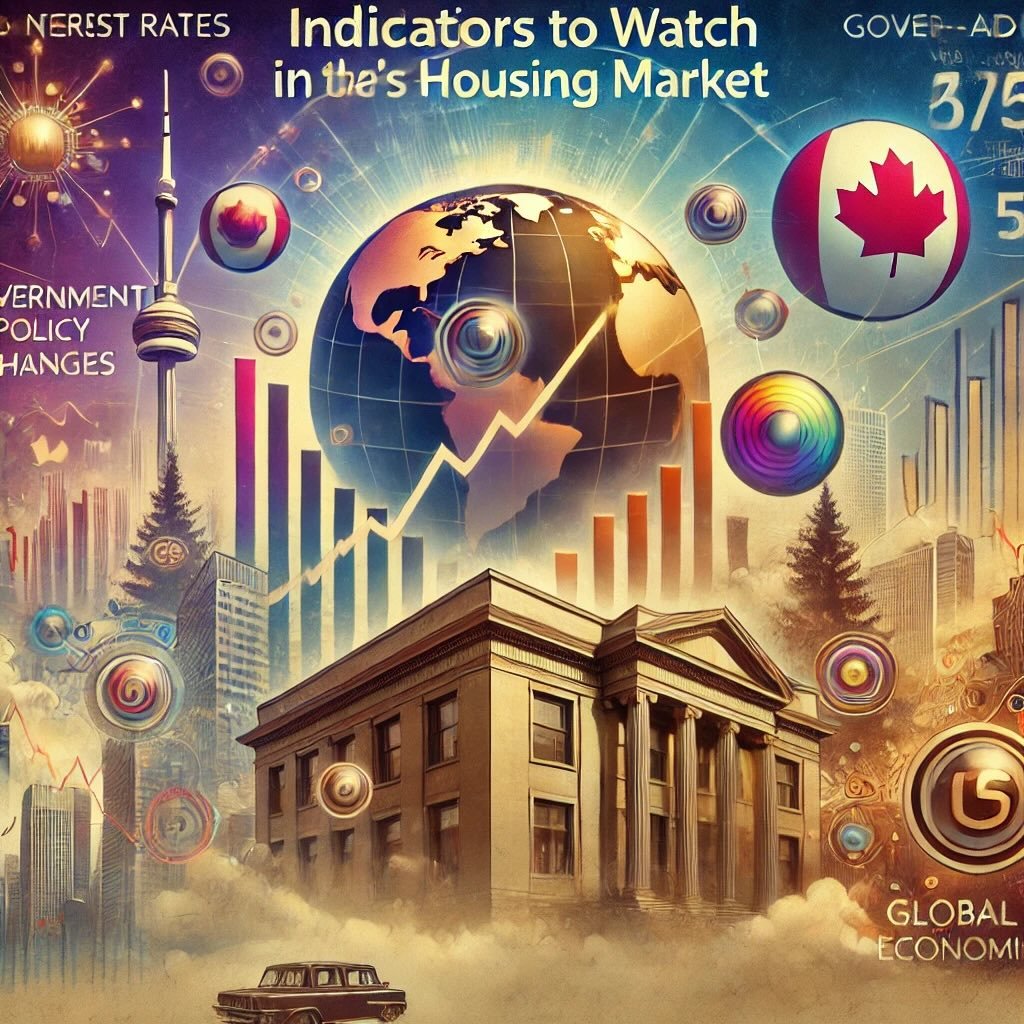
Indicators to Watch Moving Forward
Interest Rate Trends
One of the most critical indicators to watch in the coming months is the direction of interest rates. As the Bank of Canada adjusts its monetary policy, any upward movement in interest rates could have a significant impact on housing affordability. Higher rates mean higher mortgage costs, which could dampen demand, particularly among first-time buyers and those with variable-rate mortgages. For current homeowners, rising rates could increase the financial burden, especially for those who are already stretched thin. It’s essential to monitor how these rate changes might influence both buyer behavior and overall market stability.
Government Policy Changes
Government policies will also play a crucial role in shaping the future of Canada’s housing market. Potential changes, such as further tightening of mortgage regulations, could restrict access to credit and slow down price growth. Additionally, there could be new taxes or incentives aimed at curbing speculation or increasing affordable housing supply. Keeping an eye on any legislative developments will be key to understanding how the market might shift. These policies could either cool off an overheating market or provide relief in areas where affordability is most strained.
Market Sentiment
Market sentiment is another vital indicator that could signal shifts in the housing market. Currently, there is a mix of optimism and caution among buyers, sellers, and investors. As prices continue to climb, some buyers may start to feel priced out, leading to a decrease in demand. On the flip side, if investors sense that the market is nearing a peak, they might start pulling back, which could result in a slowdown. Changes in sentiment often precede actual market movements, so it’s crucial to stay attuned to the general mood in the market.
Global Economic Factors
Lastly, global economic conditions will likely have a ripple effect on Canada’s housing market. Trade relations, particularly with the United States and China, could influence economic growth and, by extension, the housing sector. Additionally, broader economic trends such as global inflation rates, commodity prices, and international capital flows could impact the Canadian economy. A slowdown in global economic growth could lead to reduced demand for Canadian real estate, while a robust global economy might support continued growth. Understanding these broader forces will be essential for anticipating how they might affect the housing market in Canada.
12-Question FAQ: Canada’s Housing Affordability Crisis—Signs of an Extreme Bubble?
1) Is Canada in a housing bubble right now?
Canada shows multiple bubble-like traits in several metros (rapid price gains, stretched valuations, heavy investor activity, high leverage). Whether it’s a full bubble depends on if prices are decoupled from incomes/rents and credit continues to expand. Some regions look overheated; others are merely expensive.
2) What does “housing affordability” actually mean?
Affordability gauges how far typical incomes go toward buying or renting. Two core metrics:
Price-to-Income (PTI): median home price ÷ median household income.
Mortgage-to-Income (MTI) / Debt-Service: share of income needed for payments (often at a stress-tested rate).
Higher PTI/MTI = lower affordability.
3) How stretched are Canada’s big cities on PTI and MTI?
Toronto and Vancouver have PTIs in the high-single to low-double digits (≈9–12x), far above the ~3–4x “affordable” rule-of-thumb. MTI has also surged with rate hikes, pushing many buyers to or above common affordability thresholds (e.g., 30–39% gross income).
4) Who is most affected by poor affordability?
First-time buyers: priced out or pushed far from jobs/amenities.
Young families: squeezed between space needs and high carrying costs.
Lower-income households & newcomers: more reliant on renting, facing tight vacancy and rising rents.
5) Are rapid price increases a bubble signal?
Yes—when price growth far outpaces incomes and rents for years, it’s a classic warning. It can reflect speculation/FOMO more than fundamentals, especially when paired with easy credit.
6) How big a role do investors and speculation play?
Investor purchases, assignments/“flips,” and pre-construction speculation amplify demand and volatility. High investor shares in hot neighborhoods can detach prices from local end-user affordability.
7) How risky is Canada’s household debt?
Household debt-to-income is elevated. With variable rates and renewing fixed terms at higher rates, payment shock raises default and consumption-cut risks—particularly among highly leveraged households.
8) Haven’t lending rules been tightened?
Yes—stress tests (qualify at a higher rate), tighter underwriting, and loan-to-income caps in some cases. They reduce marginal risk but don’t fully offset high prices, strong investor demand in the past, or renewal risk as rates reset.
9) What about government market interventions?
Foreign-buyer and speculation/vacancy taxes: aimed at curbing non-resident or idle ownership.
Supply measures & affordability programs: incentives, fast-track permits, and funding for purpose-built rentals and below-market units.
Impact: mixed—some cooling at the margin, but structural supply and demand imbalances remain in major hubs.
10) How do regions differ across Canada?
Toronto/Vancouver & nearby metros: acute affordability pressure, stronger bubble signals.
Montreal/Ottawa/Halifax/Victoria: elevated but varied by neighborhood.
Prairies/Atlantic/smaller centres: generally more affordable, though some saw pandemic-era spillover gains. Local economies, migration, and supply pipelines drive divergence.
11) What happens if a bubble bursts?
Potential outcomes: price declines, construction slowdown, negative equity for peak-buyers, higher arrears in stressed cohorts, bank risk (mitigated by recourse lending and strong regulation), and community impacts from forced sales. Magnitude depends on rates, employment, and policy response.
12) Which indicators should Canadians watch next?
Interest-rate path & renewal wave (payment shock).
Credit growth & arrears (stress in borrowers).
Sales-to-new-listings, months of inventory, price-to-rent (market balance).
Policy changes (zoning/supply, tax tweaks, stress-test settings).
Global/macro trends (growth, immigration, capital flows).
Bonus: Practical takeaways
For buyers: budget at stress-test rates + renewal buffers; prefer fixed-cost certainty; consider commute-time vs. cost trade-offs; don’t waive inspection/financing lightly.
For owners: stress-test renewals 12–18 months ahead; build cash buffers; consider accelerations or extensions to manage payments.
For investors: underwrite price-to-rent and cap rate with vacancy/expense realism; avoid reliance on short-term appreciation; watch policy risk.
Educational content only—this is not financial or legal advice.
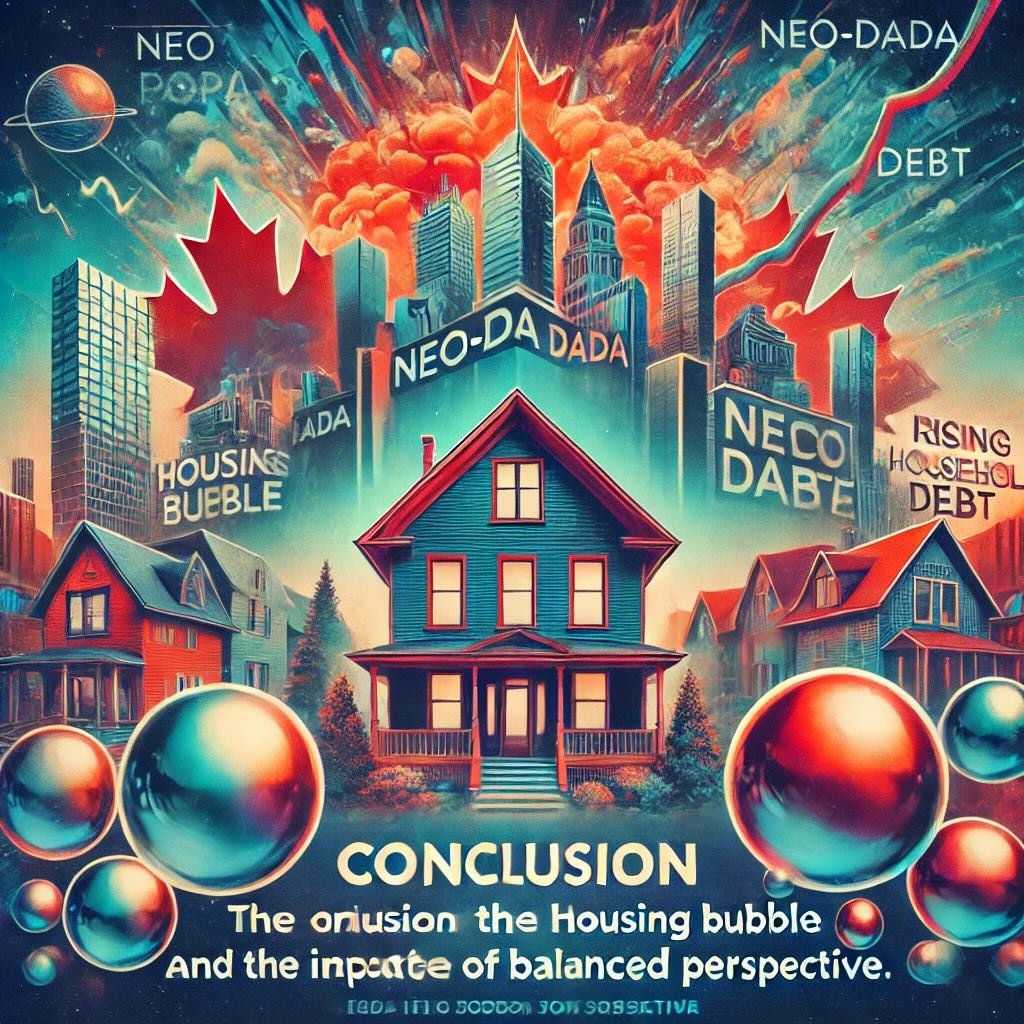
Conclusion
Canada’s housing market is raising eyebrows, and for good reason. We’ve explored several warning signs that suggest a potential housing bubble could be forming. Rapid price appreciation has been a central concern, with property values skyrocketing in major urban centers. Speculation is another red flag, as increasing numbers of investor-owned properties and house flipping drive prices even higher. Meanwhile, rising household debt levels add another layer of risk, particularly in a scenario where interest rates might climb.
Balanced Perspective
However, it’s important to approach this situation with a balanced perspective. While these indicators point toward the possibility of a bubble, it’s also possible that Canada’s market is experiencing a period of rapid but temporary change. Factors such as supply shortages, population growth, and shifts in demand due to the pandemic have all contributed to the current affordability crisis. Whether this is a precursor to a market correction or a temporary spike remains uncertain.
Final Thoughts
In times of uncertainty, staying informed is crucial. For those considering making significant real estate decisions, whether buying, selling, or investing, it’s essential to keep a close eye on market trends and the indicators we’ve discussed. While the future of Canada’s housing market is difficult to predict, a cautious approach can help mitigate risk. Above all, remember that real estate markets are cyclical, and what goes up may eventually come down—making informed, careful choices all the more important.
Important Information
Comprehensive Investment Disclaimer:
All content provided on this website (including but not limited to portfolio ideas, fund analyses, investment strategies, commentary on market conditions, and discussions regarding leverage) is strictly for educational, informational, and illustrative purposes only. The information does not constitute financial, investment, tax, accounting, or legal advice. Opinions, strategies, and ideas presented herein represent personal perspectives, are based on independent research and publicly available information, and do not necessarily reflect the views or official positions of any third-party organizations, institutions, or affiliates.
Investing in financial markets inherently carries substantial risks, including but not limited to market volatility, economic uncertainties, geopolitical developments, and liquidity risks. You must be fully aware that there is always the potential for partial or total loss of your principal investment. Additionally, the use of leverage or leveraged financial products significantly increases risk exposure by amplifying both potential gains and potential losses, and thus is not appropriate or advisable for all investors. Using leverage may result in losing more than your initial invested capital, incurring margin calls, experiencing substantial interest costs, or suffering severe financial distress.
Past performance indicators, including historical data, backtesting results, and hypothetical scenarios, should never be viewed as guarantees or reliable predictions of future performance. Any examples provided are purely hypothetical and intended only for illustration purposes. Performance benchmarks, such as market indexes mentioned on this site, are theoretical and are not directly investable. While diligent efforts are made to provide accurate and current information, “Picture Perfect Portfolios” does not warrant, represent, or guarantee the accuracy, completeness, or timeliness of any information provided. Errors, inaccuracies, or outdated information may exist.
Users of this website are strongly encouraged to independently verify all information, conduct comprehensive research and due diligence, and engage with qualified financial, investment, tax, or legal professionals before making any investment or financial decisions. The responsibility for making informed investment decisions rests entirely with the individual. “Picture Perfect Portfolios” explicitly disclaims all liability for any direct, indirect, incidental, special, consequential, or other losses or damages incurred, financial or otherwise, arising out of reliance upon, or use of, any content or information presented on this website.
By accessing, reading, and utilizing the content on this website, you expressly acknowledge, understand, accept, and agree to abide by these terms and conditions. Please consult the full and detailed disclaimer available elsewhere on this website for further clarification and additional important disclosures. Read the complete disclaimer here.


